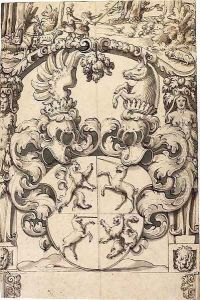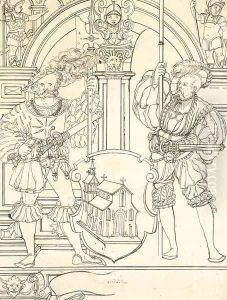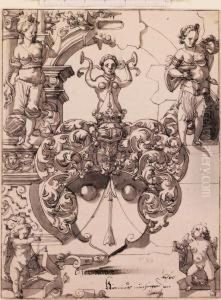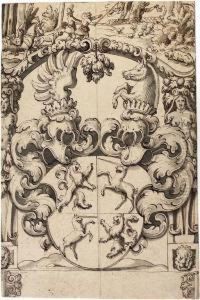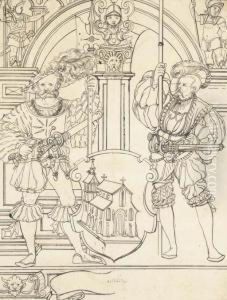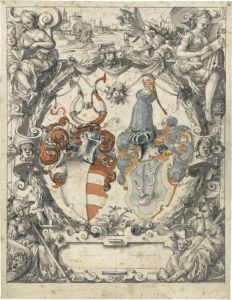Hans Jakob Plepp Paintings
Hans Jakob Plepp was a Swiss artist, known primarily for his detailed drawings and etchings, which provide a rich historical record of the early 17th century. Born in 1579 in the Swiss town of Basel, Plepp grew up during a period of significant religious, political, and cultural change in Europe. This environment, marked by the aftermath of the Reformation and the beginning of the Thirty Years' War, deeply influenced his work and the subjects he chose to depict.
Plepp was trained in the arts in Basel, a city known for its vibrant cultural scene and as a center for humanism. Little is known about his early training, but it is clear from his surviving works that he possessed a keen eye for detail and a profound interest in capturing the world around him. Unlike many of his contemporaries who focused on religious and mythological themes, Plepp's work often depicted everyday life, landscapes, and cityscapes, providing valuable insights into the society of his time.
Throughout his career, Plepp travelled extensively across Europe, which allowed him to document a variety of locales and subjects. His drawings and etchings serve not only as artistic expressions but also as historical documents, offering glimpses into the architecture, fashion, and social conditions of the early 17th century. Despite his significant contributions to art and history, Plepp's work was not widely recognized during his lifetime, and he remained relatively obscure until the late 19th and early 20th centuries when interest in his work was revived.
Hans Jakob Plepp died in 1627, leaving behind a body of work that continues to be studied and appreciated for its artistic merit and historical value. Today, his drawings and etchings can be found in museums and private collections around the world, serving as a testament to his skill as an artist and his unique perspective on the world of the early modern period.
